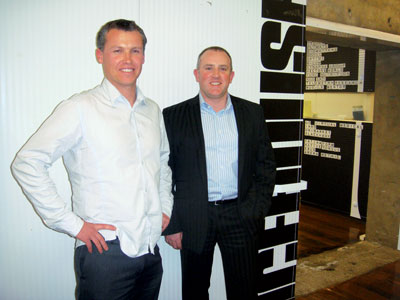Negotiating the recruitment minefield
The job market is the toughest it has been for a long time. Patricia Moore consults the experts to pass on some valuable tips for employers.
|
Regardless of which side of the fence you’re on, the recruitment landscape currently presents a rather challenging picture. If you’re looking for work the terrain is bleak and rocky. If you’re advertising for staff, the pastures are lush – but prepare to be inundated with applications, the vast percentage of which will be inappropriate. Michael Whybro of SOS Recruitment says the job market is the toughest he’s ever seen it. He’s been recruiting or using recruiters for around 20 years. “For candidates it’s almost the exact opposite of two years ago when we had a huge number of vacancies and simply couldn’t find appropriate or qualified and experienced staff.” He estimates the recruitment market currently has around 75 percent fewer jobs than 12 months ago and probably 400 to 500 percent more applicants. While there are still skills shortages in some areas, for many industries there’s an excess of qualified and experienced people. But you’ve got to do a lot of searching through the chaff to find the wheat, says Whybro. “I advertised a role on The job was nothing flash, he says. “Office admin, at around $45K.” But unless there was a compelling reason not to, he had to read every one of those 289 CVs. The response to another recent ad – a very senior role paying in excess of $200,000 – was also an eye opener. “I had 128 applicants. Now I didn’t think there were 128 people in Many of them were overqualified, he says; “people who’d been CFOs with big brand international companies, some of whom had been made redundant as far back as October last year.” The financial strain on households is also forcing new entrants into the market, says Samara Brown of Connex Recruitment. “The number of stay-at-home parents seeking employment has increased, as has the number freelancing or consulting on a self-employed basis.” There are more people happy to temp or ‘do anything’, she says, and there have been increases in applicants seeking a second job and in those simply wanting to register with an agency. It all sounds like good news for those companies that are hiring. But while the choice is greater and applicants are prepared to be more flexible to secure employment, there are definite downsides to a candidate-rich market; the sheer volume of applications for an advertised role is just one of them. “Treating all applicants with respect and dignity, and not just like a number, is the challenge when dealing with a huge number of applications,” says Bede Ashby, managing director of Momentum. However, for employers it’s an opportunity to reinforce a great employment brand, he says. “Not by pretty adverts but by treating all applicants appropriately.” The temptation to hire an overqualified candidate also needs to be dealt to, says Michael Whybro. “No matter what they promise, there’s a 90 percent chance that within six months of the economy improving they’ll be offered a lot more money and a lot bigger challenge and they’ll leave you. Take the person you know is the right fit, at the right level, so they’ll still be with you when the market improves.” Indeed, hiring a more experienced skilled employee for a reasonable remuneration package comes with a high-risk tag, says Samara Brown. “They may not be around long if the position is not adequately challenging or if there is little in the way of career progression opportunity. Essentially, your vacancy will be a ‘filler’ for them, in the current climate.” So does quantity equate to quality? “A year ago you could expect, on average, 60 applications with three or four being right for an organisation,” says Gay Barton, GM at Drake New However Ashby sees the situation as one of appropriateness rather than quality. “People apply for roles because they want a job. They’re not necessarily eminently qualified for the role, but if job pickings are slim they’ll give it a go.” This often leads to employers lamenting the appropriateness of applicants and making derogatory comments about the quality, he says. “In actual fact we’re now dealing with what we call a normal market, with lots of applications per position and people trying to secure something or expand their horizons, as opposed to the previous five years which were an aberration.” The candidates are out there and they want to talk. But employers are still making incorrect employment decisions, says Steve Kennedy, of HR specialists EQ Consultants in “It may be because people who lack the skills and training are doing the recruiting. It may be they’re not going through a thorough recruitment process and making an informed decision.” They’re comparing those applying for roles today with those who are not performing that well, he says. “This is a flawed strategy. Employers should be comparing applicants with the best people within their organisation and always looking to lift the bar.” Attracting the best people SMEs need to be utilising all the options available to them to attract the best people, says Bede Ashby. “Print and job board advertising, networking via social sites such as LinkedIn, and word of mouth from people they know. And be prepared to talk to a reasonable number of people to find the one that can do, will do and will fit in.” It’s also important to ensure the correct people are recruiting and following a robust objective process, says Steve Kennedy. “Onboard the wrong people and you’ll be hamstrung trying to manage them up or manage them out.” |
The greatest challenge for SMEs is finding the time to concentrate on the recruitment process, says Connex’s Brown. The solution? “Outsource, outsource, outsource! Partner with an agency you trust and one that comes recommended. The recruitment process is exactly that – a process. Steps need to be followed and unless you have the time, the resources and the expertise, you need to outsource.” And, she says, where cost is an issue, many agencies, such as Connex, now have more flexible solutions available. Consider having your HR specialist ‘unbundle’ their services, taking over one part of the process. Drake New And in Christchurch Steve Kennedy says they work with many SMEs, sometimes undertaking just the psychometric assessment and an independent third party final review. “This gives the SME confidence they are making the right decision.” Outsourcing may also be the answer when it comes to filling a vacancy within a company – hiring a contractor can provide an employer with a more flexible solution and less long-term financial commitment, says Samara Brown. (The results of a Recruiting and Consulting Services Association member research survey, released in June, indicated demand for contract and on-hire placements had almost doubled, ‘confirming that businesses are continuing to take a risk-averse approach to recruiting new talent, opting for temporary staff rather than permanent placements’. And the Robert Half 2009 International Workplace Survey (June 09) showed contractors in ‘hot demand’ in the finance and accounting sectors.) A contractor can add tremendous value, have little or no downtime, and be switched off once a project is complete or a task is done, says Bede Ashby. “Whether it’s smarter to hire permanent or contracting staff depends very much on the individual circumstances of that particular employer.” But, he adds, any value a contractor adds to the culture of an organisation depends very much on them being treated as a valuable commodity and not as an expendable resource. Market predictions Today’s employment landscape is a whole lot different to that of a year ago. But how will it look in 12 months time? Drake New There could also be what Gabrielle Young, Stratus Consulting director, describes as dramatic changes in the way those individuals connect with potential employers. Online recruitment is growing, and overseas the traditional recruitment agency model is being replaced by more innovative ways of doing the same job, she says. “I deal with a lot of people in the States and they’re doing it differently. Employers are recruiting directly, mining social networks, using alumni and sources like LinkedIn and Facebook.” The key is a good employment brand, she says. “Everyone talks about their employer.” The employment brand needs to be defined. “It’s not hard. Just ask questions like ‘why did you come to work here’ and ‘what’s important to make you stay’?” And once you’ve defined the brand, use it, says Young. “Being clear about your employment brand is important for SMEs anyway. But it needs to be articulated, online and in any form of advertising an SME does for candidates.”
|





